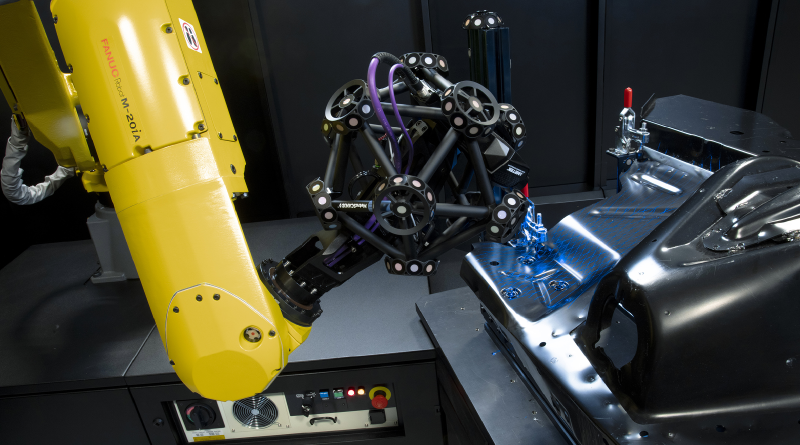Automated Dimensional Inspection Systems Increasingly Replacing Manual Processes
Automated dimensional inspection plays a critical role in Industry 4.0 manufacturing. It is an essential process for ensuring that products meet design specifications, reducing errors and improving overall efficiency. In this article, we will explore the role of automated dimensional inspection in Industry 4.0 manufacturing, including its benefits, applications, and future developments. The full array of automated dimensional inspection systems will be on display at the upcoming CONTROL exhibition in Stuttgart representing a great opportunity to witness the latest technologies and developments in a single forum.
Automated Dimensional Inspection: An Overview

Automated dimensional inspection systems use advanced technologies, such as lasers, cameras, and sensors, to measure and evaluate the physical characteristics of a product or component. These systems can measure dimensions, angles, shapes, and other features to ensure that they meet the required tolerances.
Automated dimensional inspection systems are increasingly replacing manual inspection processes in Industry 4.0 manufacturing. Automated systems are more accurate, efficient, and cost-effective than manual inspection, making them an essential part of modern manufacturing processes.
Benefits of Automated Dimensional Inspection in Industry 4.0 Manufacturing

Automated dimensional inspection offers a range of benefits in Industry 4.0 manufacturing, including:
Improved Accuracy: Automated dimensional inspection systems are more accurate than manual inspection processes. They can measure parts with a higher level of precision, reducing the risk of errors and ensuring that products meet required tolerances.
Increased Efficiency: Automated dimensional inspection systems can quickly measure parts, reducing the need for manual inspection and improving overall efficiency. Automated systems can perform measurements faster than human operators, allowing manufacturers to produce more products in less time.
Real-time Monitoring: Automated dimensional inspection systems can monitor manufacturing processes in real-time. These systems can detect defects and anomalies as they occur, allowing manufacturers to address issues before they become larger problems.
Cost Savings: Automated dimensional inspection systems can help manufacturers save time and money. By reducing the need for manual inspection and improving efficiency, automated systems can reduce labor costs and increase productivity.
Applications of Automated Dimensional Inspection in Industry 4.0 Manufacturing

Automated dimensional inspection is used across a range of industries in Industry 4.0 manufacturing, including:
Aerospace: Automated dimensional inspection is used to ensure that aircraft components meet strict quality standards, including weight, dimensions, and shape. Automated systems can measure complex shapes and angles, making them ideal for use in aerospace manufacturing.
Automotive: Automated dimensional inspection is used to ensure that automotive parts, such as engine components and body panels, meet design specifications. Automated systems can measure parts quickly and accurately, reducing the need for manual inspection and improving overall efficiency.
Medical Device Manufacturing: Automated dimensional inspection is used to ensure that medical devices, such as implants and surgical instruments, meet strict quality standards. Automated systems can measure small and intricate parts, making them ideal for use in medical device manufacturing.
Electronics: Automated dimensional inspection is used to ensure that electronic components, such as circuit boards and connectors, meet design specifications. Automated systems can measure parts with a high level of precision, ensuring that electronic products function correctly.
Future Developments in Automated Dimensional Inspection

The future of automated dimensional inspection in Industry 4.0 manufacturing continue to advance. Advancements in technology, such as the Internet of Things (IoT), artificial intelligence (AI), and machine learning, will enable automated systems to become even more efficient and accurate.
One area of development is the integration of automated dimensional inspection systems with other manufacturing processes. For example, automated dimensional inspection systems could be integrated with additive manufacturing processes to ensure that 3D-printed parts meet design specifications.

Another area of development is the use of AI and machine learning in automated dimensional inspection. AI and machine learning algorithms can analyze large amounts of data, detecting patterns and anomalies in manufacturing processes. This technology could be used to develop predictive maintenance systems, allowing manufacturers to address issues before they cause downtime or product defects.
As manufacturing industry continues to evolve, automated dimensional inspection will play an increasingly important role in ensuring that products meet design specifications and quality standards.




